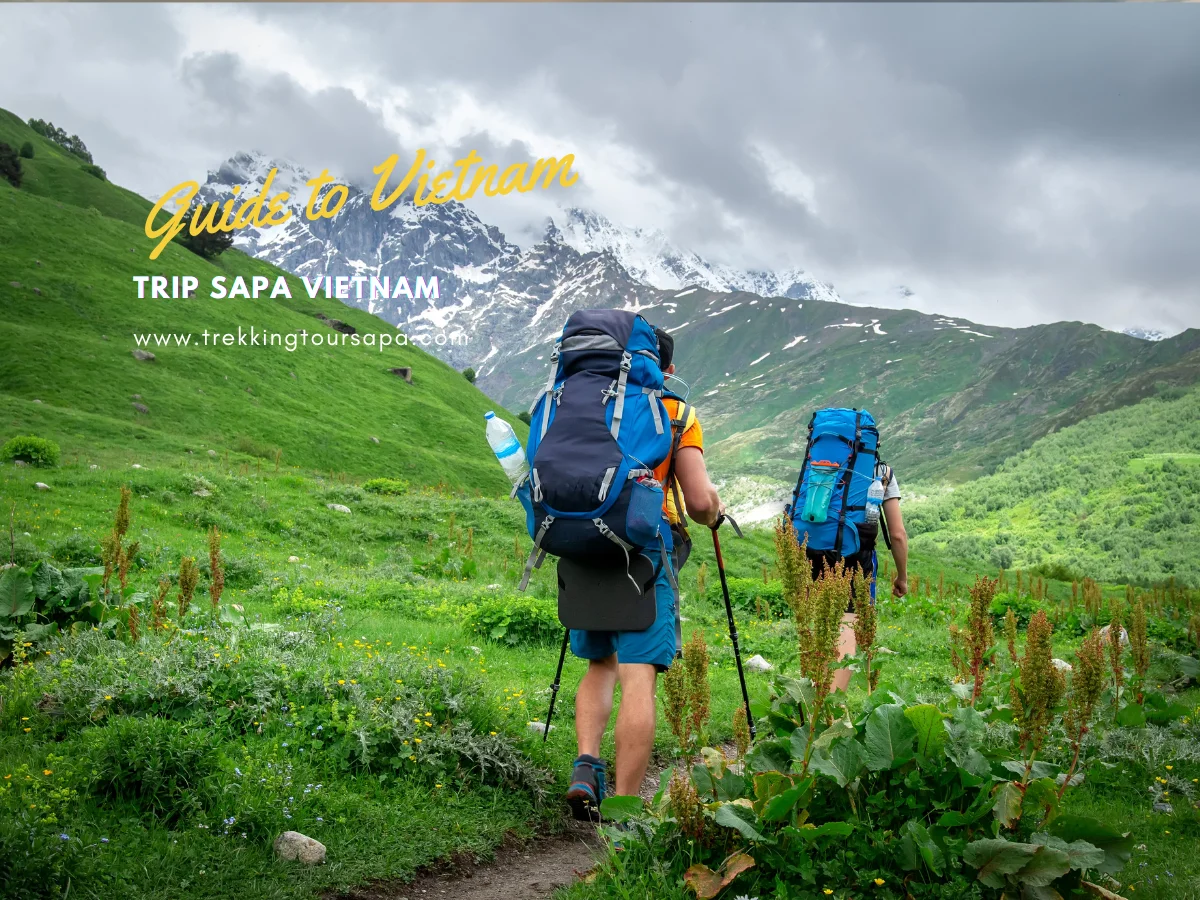Welcome to Sapa, a stunning place in northern Vietnam’s mountains. It’s perfect for those wanting to get away from Hanoi’s busy life. Here, you’ll find breathtaking views and a rich cultural scene. We’ll explore everything from the highest peak, Fan Si Pan, to the beautiful rice terraces worked by local tribes.
Sapa has been a favorite spot for trekkers since the early 1900s. It was a peaceful hill station during the French colonial era. Now, it’s a top spot for trekking, with guided tours costing about $100. This lets us see the area’s beauty and meet its lively culture.
In this guide, we’ll cover all you need to know about visiting Sapa Vietnam. We’ll talk about getting there, where to stay, and what to eat. So, let’s start exploring Sapa’s secrets and make memories that will last a lifetime!
Trip Sapa Vietnam Key Takeaways
- Sapa is home to Vietnam’s highest peak, Fan Si Pan, at 3,143 meters.
- Trekking in Sapa has attracted adventurers since the early 1900s.
- Popular ethnic minorities in Sapa include the H’Mong, the Dao, and the Dai.
- Organizing a Sapa trekking tour typically costs around $100.
- The ideal seasons for visiting Sapa are from March to May and September to November.
- Transportation options from Hanoi include sleeper trains and buses.
- Sapa offers a wide range of activities, from hiking to local villages to enjoying traditional dishes.
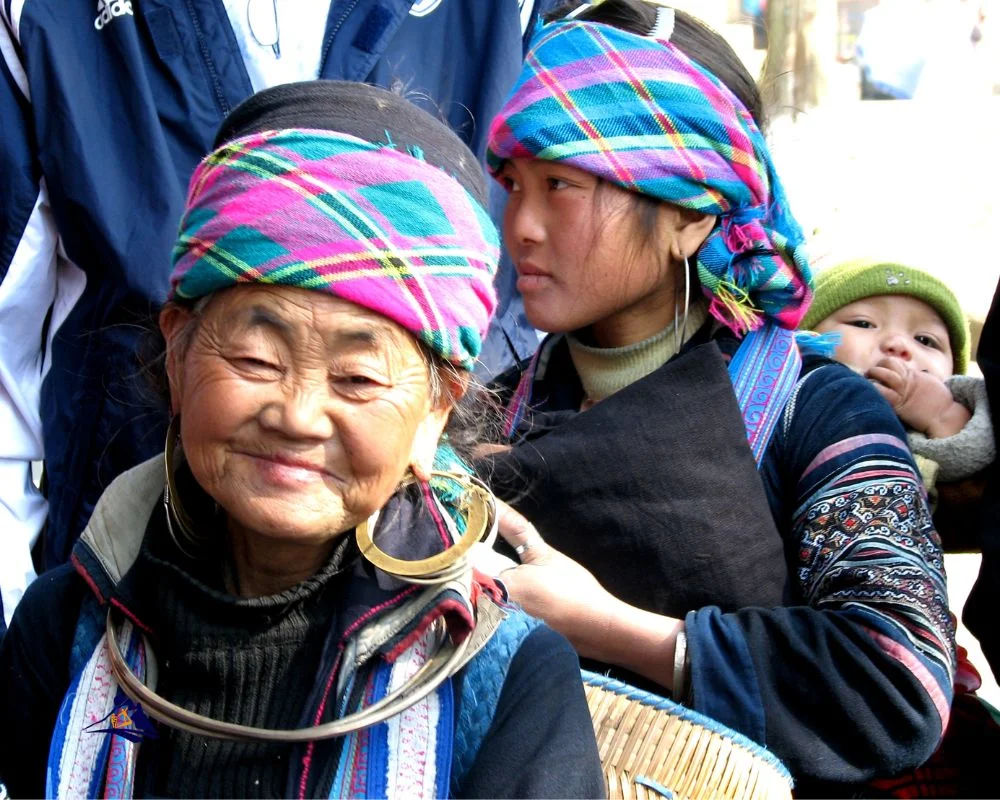
Table of Contents
ToggleIntroduction to Sapa: A Hidden Gem in Vietnam
Sapa is a charming town in Vietnam’s northwestern mountains. It’s known for its beautiful views and rich culture. The town is at an average height of 1,500 meters. It’s close to the highest peak in Vietnam, Fansipan Mountain, which is 3,147.3 meters high.
For those who love nature and culture, Sapa is a must-see. You can visit Cat Cat Village with its traditional houses. Or see the Silver Waterfall, a stunning sight. The area has terraced rice fields and orchids on Ham Rong Mountain, showing off Sapa’s beauty.
Sapa is home to many ethnic minorities, like the Hmong and Red Dao. They are important to the local economy, offering crafts and places to stay. There are many trekking paths for all levels, letting you enjoy nature and local life.
Exploring Sapa travel packages is a great way to see its beauty. These packages include tours, cultural experiences, and visits to places like Muong Hoa Valley and Love Waterfall. The best time for trekking is from March to May and September to November, when the weather is dry and the views are amazing.
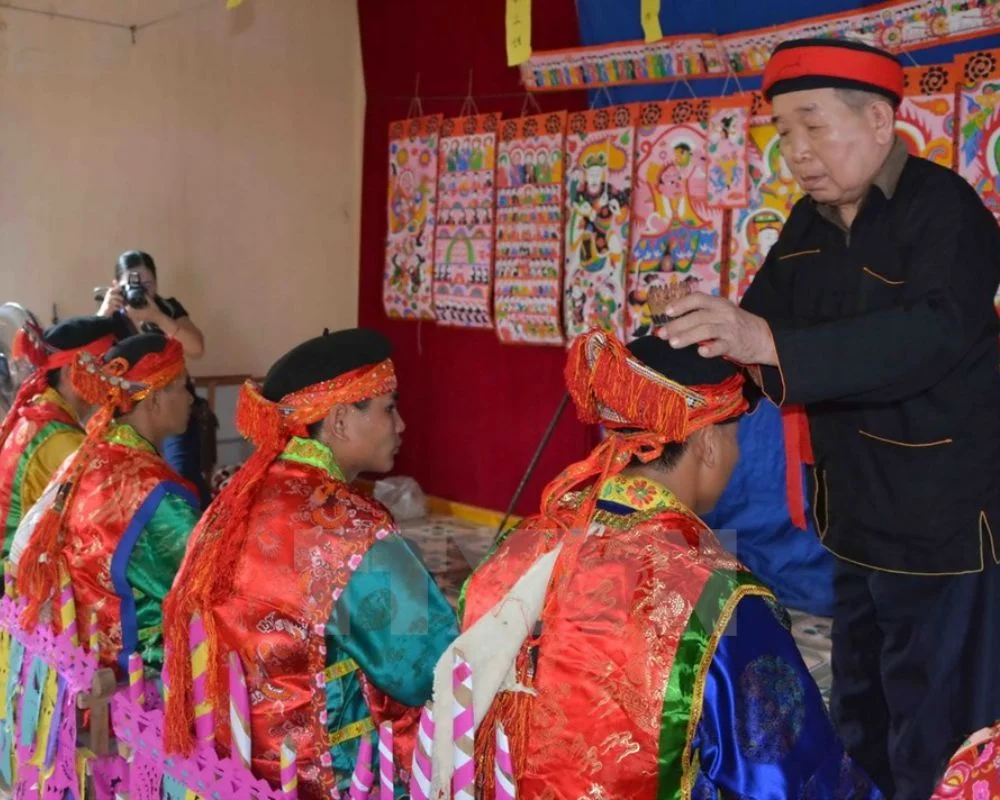
The Allure of Sapa’s Breathtaking Landscapes
Sapa is a place of stunning beauty. It has dramatic mountains, green valleys, and famous terraced rice fields. These landscapes are perfect for Sapa trekking tours. The terraced fields show the skill of local farmers and their connection to nature.
Our adventure includes amazing viewpoints around Sapa. Places like O Quy Ho Pass offer incredible views for photos and enjoying nature. We also meet different ethnic groups like the H’mong and Tay people. Their cultures add to Sapa’s rich history and make our trip special.
Trekking lets us see these beautiful places up close. We can climb Mount Fansipan, the highest peak in Indochina, or visit Cat Cat Village. Discovering places like Silver and Love Waterfalls makes our time in Sapa unforgettable.
We also get to try local foods and learn about their traditions. There’s always something new to do or see. For more tips on what to do, check our guide on Sapa attractions. Every visit to Sapa is a chance to discover more of its magic.
| Activity | Highlights |
|---|---|
| Trekking | Explore terraced rice fields and vibrant villages. |
| Photography | Scenic viewpoints of mountains and valleys. |
| Cultural Experiences | Engage with local ethnic communities. |
| Climbing Fansipan | Experience breathtaking views from the highest peak. |
| Waterfalls | Visit Silver Waterfall and Love Waterfall. |
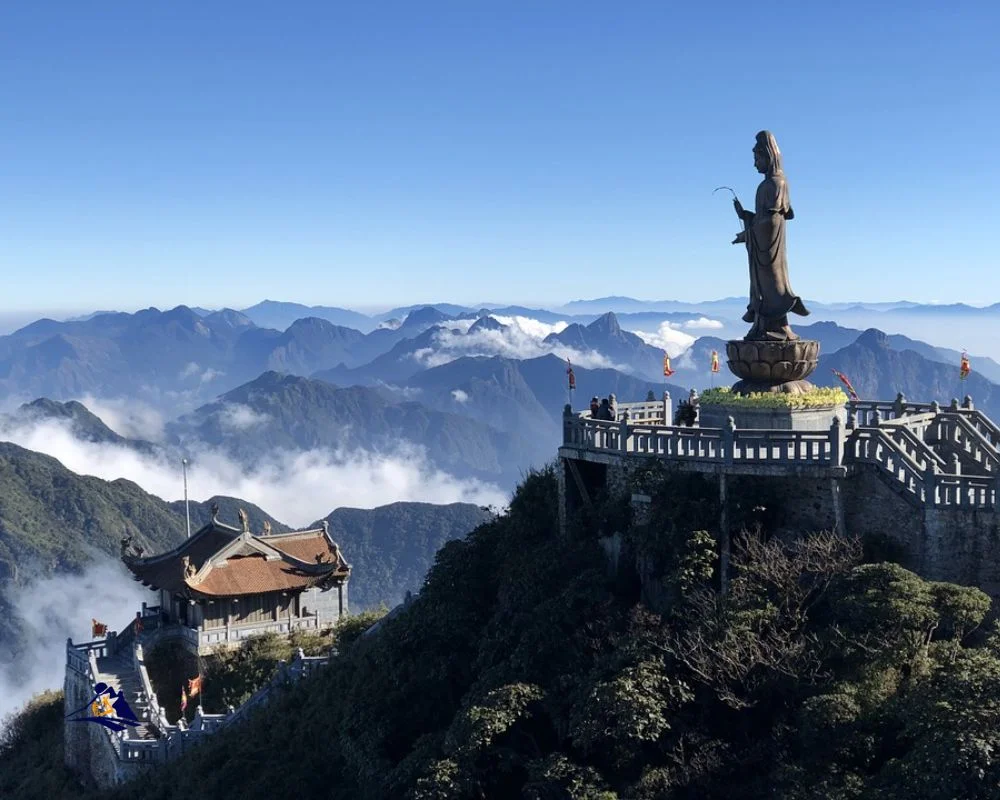
Our journey through Sapa’s landscapes is a celebration of nature and culture. It’s filled with moments we’ll always remember.
Planning Your Trip Sapa Vietnam: What You Need to Know
Planning a trip to Sapa Vietnam involves several key factors. The climate is a big one, with cool temperatures all year. This makes outdoor activities enjoyable almost any time, except during the rainy months from May to September.
The best times to visit are from March to May and September to November. These months offer great weather and stunning landscapes. A three-day itinerary is perfect for experiencing Sapa’s culture and activities.
Choosing how to travel is important. Bus tickets from Hanoi to Sapa cost around 10 to 15 USD and take six hours. Train tickets to Lao Cai, near Sapa, are 20 to 40 USD. Renting a car or hiring a driver costs 100 to 150 USD.
Sapa’s landscapes are breathtaking, with activities like trekking and climbing Fansipan. Fansipan, at 3,143 meters, offers stunning views. Hiking takes 2 to 3 days, or you can take the cable car for 30 to 40 USD.
Don’t miss local experiences like Cat Cat village and Lao Chai – Ta Van valley. These places are beautiful, especially when the rice fields are green from June to September. With the right planning, our trip can be filled with adventure and cultural connection.
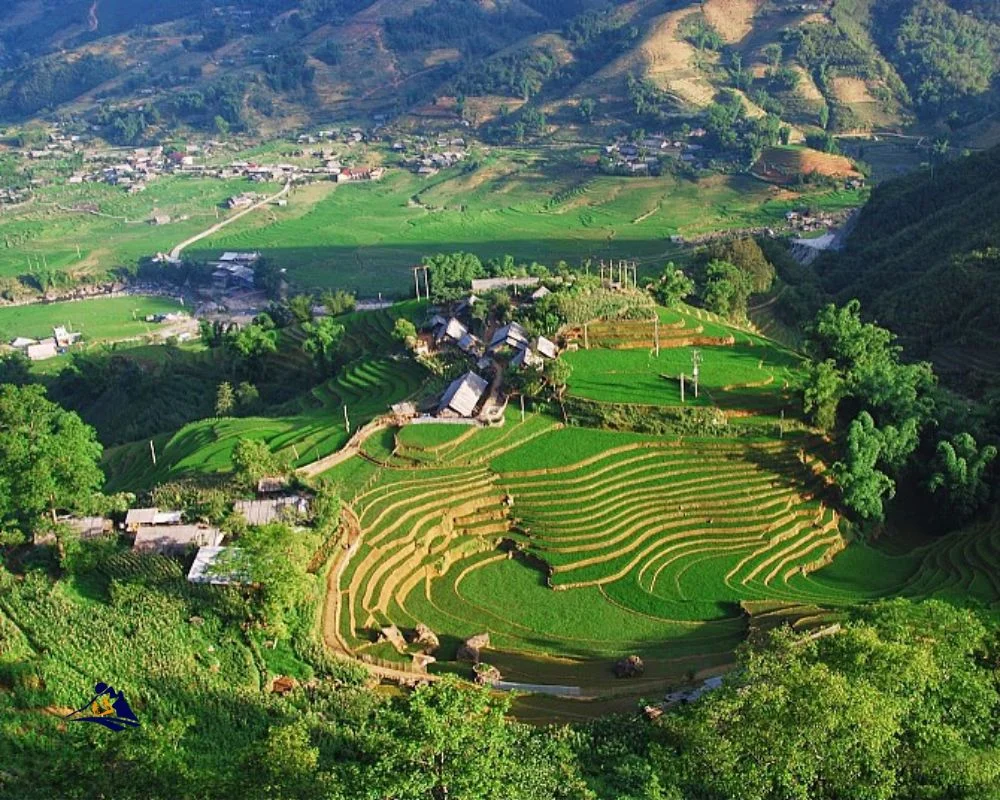
Getting to Sapa: Travel Options from Hanoi
Getting to Sapa from Hanoi is exciting and easy. We have many travel options to choose from. The distance is about 319 kilometers (198 miles). We can take trains, buses, or private vehicles.
Many like the sleeper buses for their convenience. They take around 6 hours and start at about $20. For a longer ride, we can take an overnight train. It takes about 8 hours, including a bus ride from Lao Cai to Sapa. Train tickets start at 566K VND for VIP sleeper berths.
Hiring a private taxi or minivan is faster, taking 5 to 5.5 hours. It’s pricier but offers more comfort and flexibility. Here are our options:
| Transport Method | Duration | Cost |
|---|---|---|
| Overnight Train | 7-8 hours (includes transfer) | Starts from $7 to $46 per person |
| Sleeper Bus | 6 hours | Starting at $20 |
| Private Taxi/Minivan | 5-5.5 hours | Starting from $30 per person |
| Public Bus from Lao Cai | 1.5 hours | 40,000 VND per ticket |
| Mini Van | 5.5 hours | Starting from 300K VND |
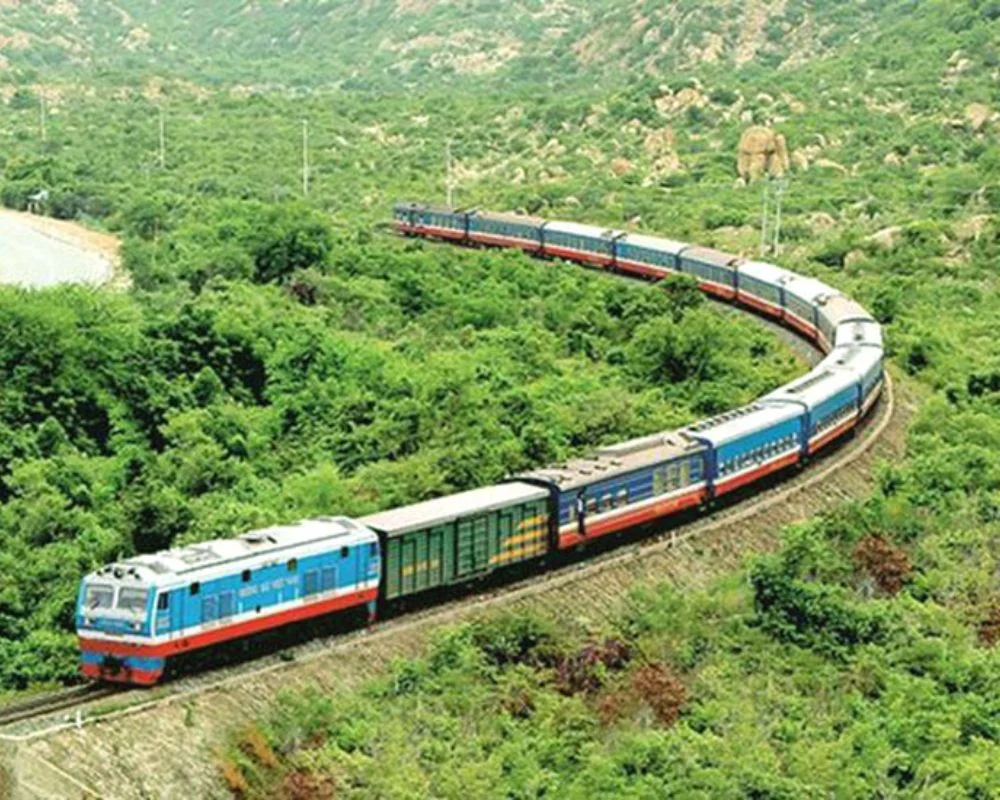
Our choice depends on budget, comfort, and time. Booking Sapa accommodation early is key. Many find Sapa travel packages make planning easier and improve the trip.
Sapa Accommodation: Where to Stay for Comfort and Culture
Sapa has many places to stay, from fancy hotels to cozy homestays. Each one offers a special experience that makes our trip better. Here’s a detailed look at the best places to stay.
For luxury, these spots are top picks:
- Hotel de la Coupole – MGallery – A lavish experience with stunning views.
- BB Sapa Resort & Spa – A 5-star retreat focusing on relaxation and rejuvenation.
- Silk Path Grand Sapa Resort & Spa – A 4-star hotel that blends comfort with elegance.
For those on a budget, Sapa has great mid-range options:
- Chau Long Sapa Hotel – Offers cozy rooms and a warm atmosphere at a budget-friendly price.
- Sapa Paradise View Hotel – A welcoming choice located in the heart of Sapa town, perfect for cultural exploration.
- Sapa Horizon Hotel – Ideal for those who desire a scenic view and convenient access to local attractions.
Travelers on a tight budget can find affordable hotels and hostels:
- Sapa Elite Hotel – Affordable option with essential amenities.
- Liberty Sapa Hotel – A social atmosphere perfect for backpackers.
- Sapa Hills Hotel – Another great stopping point for those looking to save while exploring.
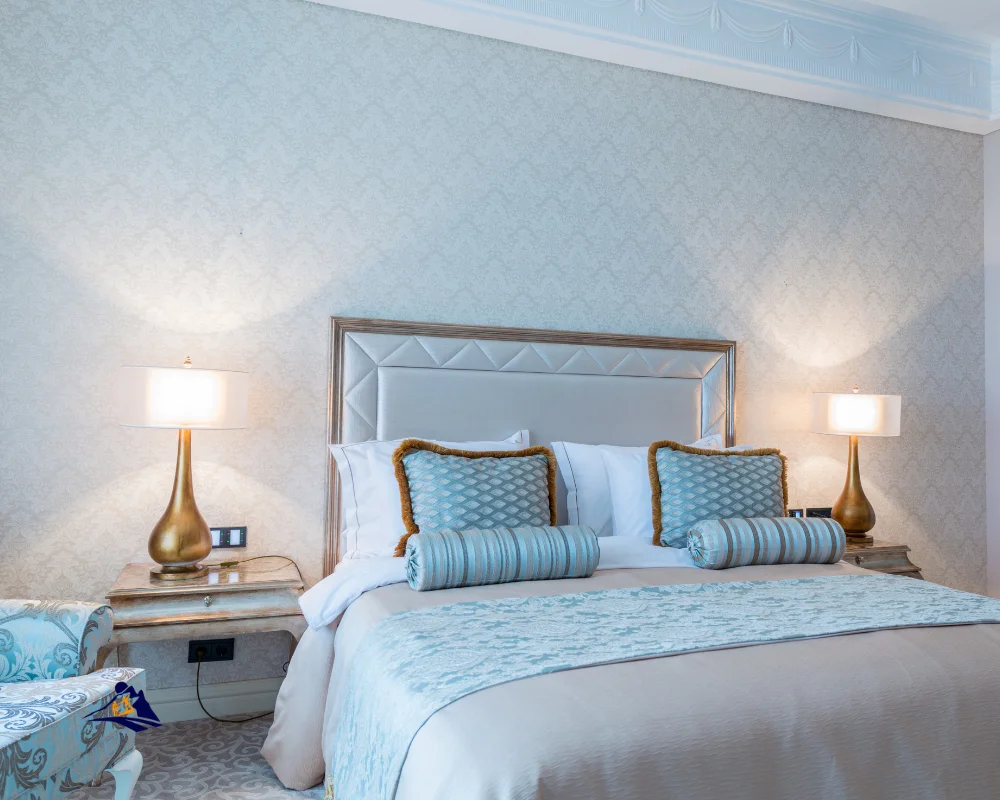
Sapa also offers unique homestay experiences, especially in Ta Van Village. Living with the local Tay ethnic minority gives us a deep cultural insight. Eco-lodges and views of the Muong Hoa River make our adventures unforgettable.
Booking early is key during busy seasons to get the best spots in Sapa. Every stay lets us dive into the area’s culture, stunning views, and rich history. Whether it’s a fancy resort or a simple homestay, the memories we make are priceless.
| Accommodation Type | Example Hotels | Features |
|---|---|---|
| Luxury Hotels | Hotel de la Coupole | Stunning views, high-end amenities |
| 5-Star Hotels | BB Sapa Resort & Spa | Relaxation, spa services |
| 4-Star Hotels | Silk Path Grand Sapa | Comfortable, elegant design |
| Budget Hotels | Sapa Elite Hotel | Affordable, essential amenities |
| Homestays | Tay Ethnic Village | Cultural immersion, local experiences |
| Hostels | Liberty Sapa Hotel | Social atmosphere, shared facilities |
Exploring Sapa’s Beautiful Rice Terraces
Sapa’s rice terraces are more than just a beautiful view. They show the hard work and creativity of local farmers. These fields are among the world’s most stunning, thanks to the farmers’ dedication.

When we visit Sapa, we see how these terraces change with the seasons. The best time to see their beauty is from mid-September to early October. During this time, the rice turns golden, creating breathtaking views.
Trekking through Sapa lets us see the terraces up close. We recommend visiting certain villages for a deeper experience:
- Cat Cat Village: Just over 2 kilometers from town, it offers amazing views of the fields.
- Ta Phin Village: Known for its unique rice fields, it’s a bit farther but worth it.
- Lao Chai – Ta Van Village: Here, the terraces look like steps to the mountains.
- Sin Chai Village: 2 kilometers from Sapa, it has fields that look like a carpet.
- Y Linh Ho Village: It has stunning views of terraces near the Muong Hoa valley.
- Ban Ho Village: It offers peaceful rice fields, accessible through hidden routes about 32 kilometers from Sapa.
We can also see the terraces from the Fansipan cable car. It offers a wide view of the fields. For those who love adventure, O Quy Ho Pass has amazing views.
There are many ways to explore these terraces. You can trek, go on photography tours, or bike. Renting traditional costumes for photos and checking the weather are good tips. The terraces are not just beautiful; they also show the local culture and history.
Exploring Sapa’s rice fields creates unforgettable memories. It’s a key part of any trip to Sapa. As we walk through these landscapes, we see the harmony between the land and its people. This enriches our journey in this hidden gem of Vietnam.
Unforgettable Sapa Trekking Tours: Embrace Nature and Culture

Trekking in Sapa lets us dive into nature and learn about ethnic minorities’ cultures. There are many Sapa trekking tours for all skill levels. This makes our adventure in Vietnam’s stunning region unforgettable.
The best times to visit Sapa are from March to May and September to November. The weather is perfect then, showing off the beautiful landscapes and culture. We can explore the Ta Phin Loop and Muong Hoa Valley on guided treks. These paths lead to local villages for authentic cultural exchanges.
For a deeper experience, try homestay trekking tours. They let us live with local hill tribe families. This way, we learn more about their traditions and way of life.
When planning our trek, we need the right gear. We should bring sturdy boots, a waterproof jacket, and insect repellent. A camera is also key for capturing the views. Being ready for the rainy season in July is important too.
It’s wise to research Sapa trekking tours before we go. This helps us find the right route for our skill and time. Guided tours offer cultural insights and ensure our safety.
Get ready for an adventure in Sapa. Its trekking tours promise unforgettable experiences with nature and culture. For more on the best time to visit Sapa, check this resource.
Sapa Nightlife: Experience the Vibrant After-Hours Scene
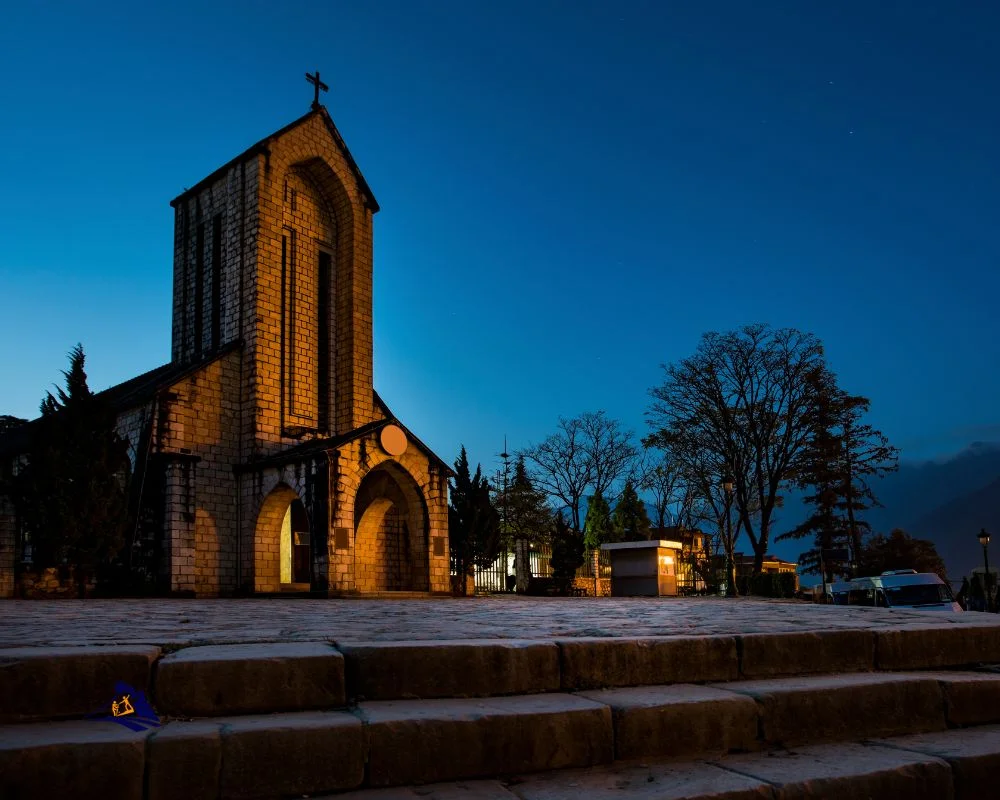
When the sun goes down in Sapa, the town comes alive. It’s a place filled with fun activities that match our daytime adventures. The night market is a big highlight, open from 6:00 PM to 10:00 PM every night. Here, we can see handmade crafts, textiles, and souvenirs from local groups.
There are also food stalls with tasty Vietnamese dishes like pho and spring rolls. We can try Thang Co, grilled skewers, or sticky rice. It’s a great way to dive into Sapa’s food scene.
The night market is also a chance to meet locals. We can talk to vendors and artisans, making our trip more meaningful. Sometimes, we might even see traditional dances and music, adding to the fun.
Visiting Sapa’s bars is another great option. We can relax with a drink and meet other travelers. Many homestays and hostels are around, perfect for making new friends or sharing travel stories.
Sapa’s nightlife offers a lot to do, from the Night Market to Town Walks. Each night brings new adventures. Exploring Sapa’s lively scene is a key part of our trip.
Sapa Attractions: Must-Visit Spots for Every Traveler
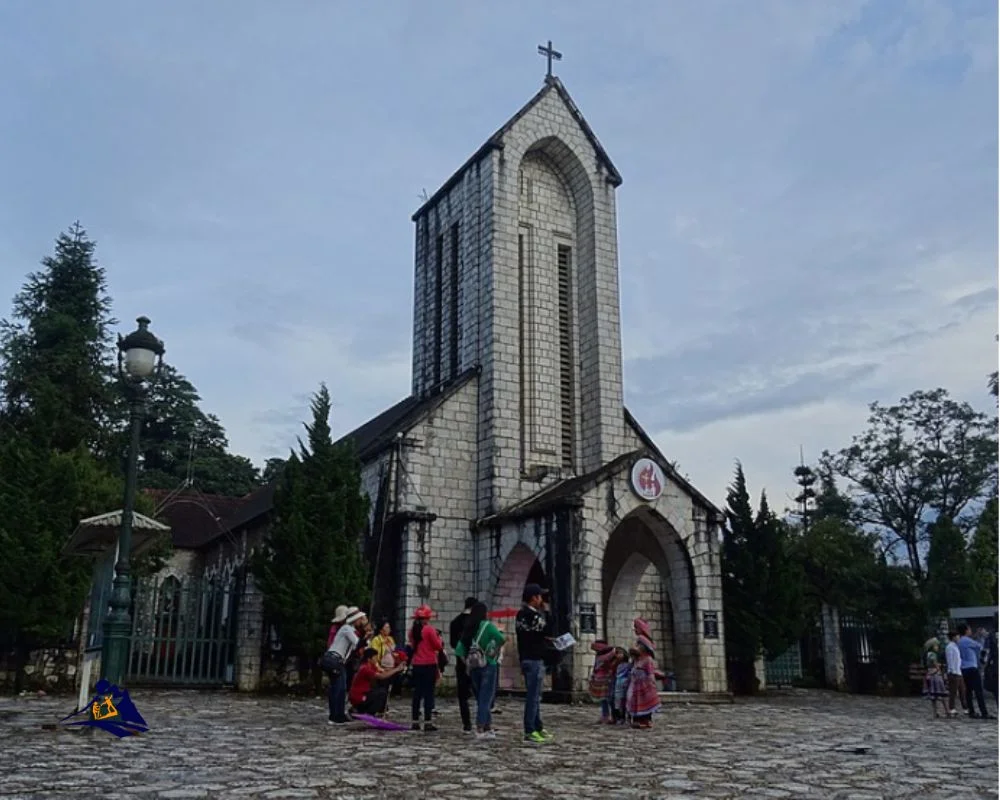
Sapa is a treasure trove of cultural and natural wonders. It’s a must-visit for anyone planning a trip to Vietnam. With stunning landscapes and rich history, we can explore several must-visit spots that highlight the unique charm of this region.
The Sapa Stone Church is an iconic Sapa attraction. It’s a beautiful cathedral built during the French colonial period. Its striking architecture offers a peek into Sapa’s historical past and makes for excellent photography.
Next, we shouldn’t miss the bustling Sapa Market. Here, local artisans showcase their handicrafts. This vibrant market not only allows us to buy unique souvenirs but also provides an opportunity to engage with the ethnic minority communities and learn more about their daily lives.
For breathtaking picturesque views, Cat Cat Village is a must. A short trek from Sapa town leads us to this traditional Hmong village. Here, we can experience local customs and traditions, making it a culturally enriching stop on our journey.
Additionally, a visit to Mount Fansipan can be an exhilarating experience. Standing at 3,143 meters, it’s the highest peak in Indochina. Whether we choose to hike or take the Sapa Mountain Climbing Train, the views from the summit are simply unforgettable.
Don’t forget about the stunning landscapes at Silver Waterfall. Located about 12 km from the town, its cascading water creates a scenic spectacle that should be on everyone’s itinerary.
Sapa 1 Day Tours
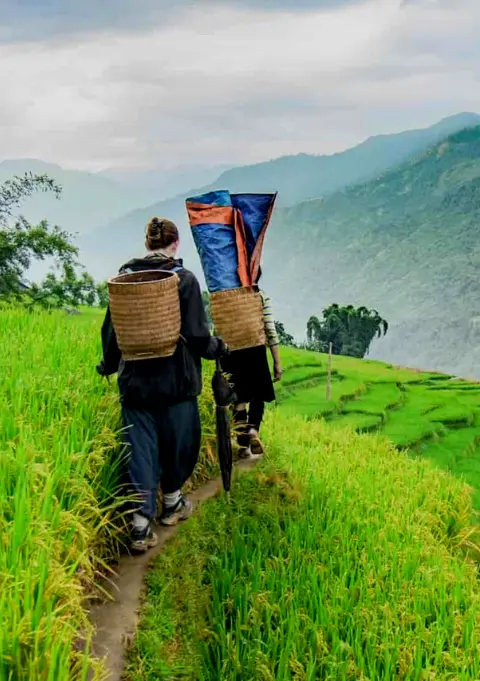
- 1 day experience
- Moderate to challenging
- Cultural immersion & active adventure
- Rice fields, valleys & villages
- Private tours
- Vegan-friendly
Sapa 2 Day Tours
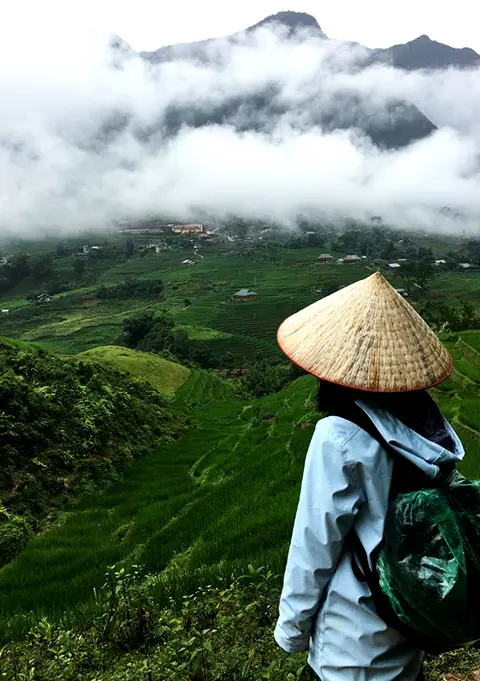
- 2 days 1 night experience
- Moderate to challenging
- Cultural immersion & active adventure
- Mountains, valleys, rice fields and villages
- Private tours
- Vegan-friendly
Sapa 3 Day Tours
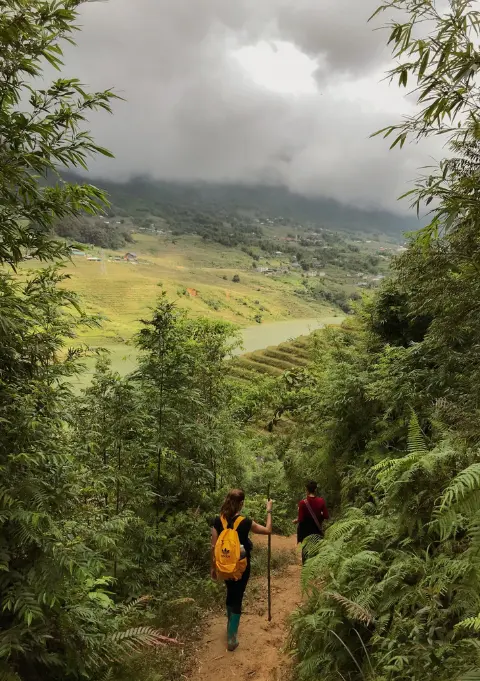
- 3 days 2 night experience
- Moderate to challenging
- Cultural immersion & active adventure
- Mountains, valley, rice fields & villages
- Private tours
- Vegan-friendly
Sapa 4 Day Tours
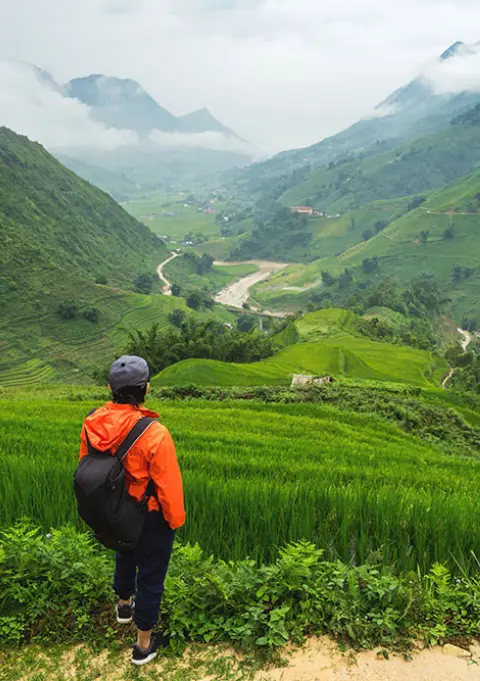
- 4 days 3 night experience
- Moderate to challenging
- Cultural immersion & active adventure
- Mountains, valleys, rice fields & villages
- Private tours – Less Touristic
- Vegan-friendly
As we plan our trip Sapa Vietnam, we can refer to various resources for more insights. A detailed itinerary can be found at this site, ensuring we make the most of our visit.
In conclusion, Sapa’s attractions offer a delightful mix of nature, culture, and adventure. Exploring these spots promises to create lasting memories for all who visit.
Culinary Delights: Sapa Vietnam Food to Savor
Sapa Vietnam food is a magical experience for travelers. It combines local ingredients with traditional cooking. This makes every meal a joy to discover.
Thang Co is a must-try dish, made with horse meat and herbs. It shows Sapa’s rich culinary heritage.
Com Lam is another favorite, a sticky rice dish cooked in bamboo. It has a smoky flavor that’s sweet. Mountain-raised Cap Nach pork is grilled and seasoned with herbs, making it juicy and tender.
Sapa’s salmon and sturgeon hotpots are perfect for cold evenings. Men Men is a dish made from ground maize, loved by the Hmong people. The five-colored sticky rice adds a splash of color to any meal.
- Dried buffalo meat is chewy yet delicate, a must-try.
- Grilled stream fish (ca suoi nuong) offers fresh flavors from local fishing.
- Bitter bamboo sprout rolls (Nem mang dang) add a twist to spring rolls.
- Black chicken is rich in flavor, often cooked with herbs.
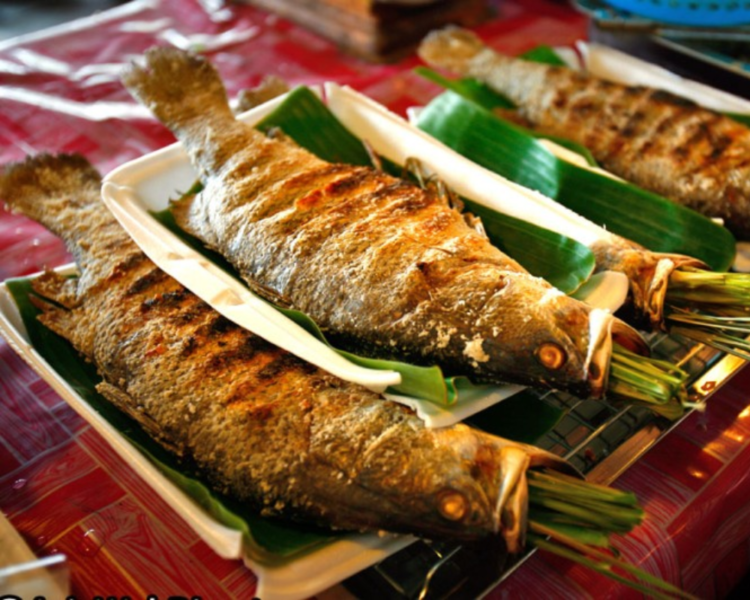
Sapa also has a variety of fruits like mac cop and Ta Van plums. They’re great for refreshing your taste buds. The local night market offers grilled foods seasoned with herbs, perfect for a late-night snack.
Dining in Sapa has many options. Places like Hmong Sisters Restaurant and Sapa Clay House use local ingredients. Street food stalls are also great for trying authentic flavors, making your trip to Sapa even more special.
Shopping in Sapa: Best Places for Unique Souvenirs
A trip to Sapa Vietnam is not complete without some shopping. The town is filled with unique souvenirs that show off the local culture. You can find traditional textiles, handicrafts, and ethnic jewelry made by talented local groups like the Hmong, Dao, and Tay.
When shopping, remember to bargain. It’s a great way to get a good deal and connect with the local culture. Handmade goods are often sold by the artisans themselves, helping them earn extra money.
Here are some top places to shop:
| Market Name | Distance from Sapa (km) | Notes |
|---|---|---|
| Sapa Market | 30 | Local crafts and fresh produce. |
| Sapa Night Market | 0 | Open from 4 PM to 10 PM on weekends. |
| Can Cau Market | 120 | Great for unique textiles. |
| Bac Ha Market | 100 | Famous for ethnic souvenirs. |
| Coc Ly Market | 80 | Traditional goods and local crafts. |
| Sin Cheng Market | 130 | Authentic local products. |
| Muong Hum Market | 45 | Known for handicrafts. |
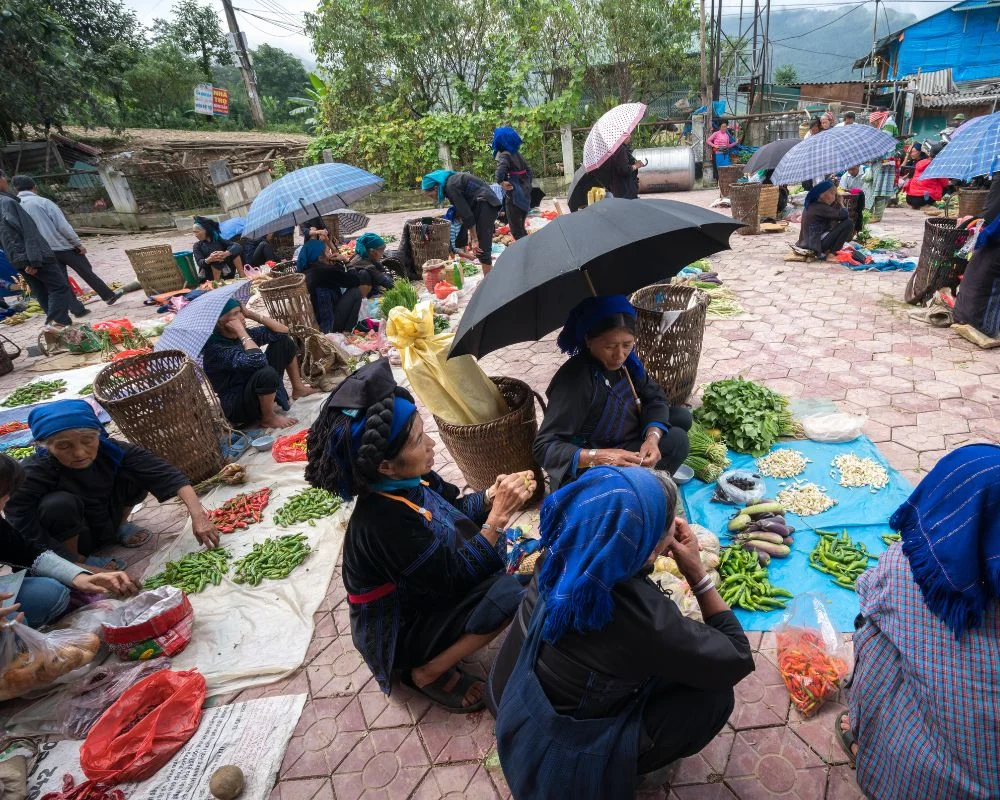
Some must-buy souvenirs include handwoven brocade, silver jewelry, and local honey. Don’t forget to pack warm clothes, as it can get very cold. For trekking gear, Hanoi has better options and prices.
Best Season to Visit Sapa: Optimal Timing for Your Adventure
Choosing the Sapa best season is key to enjoying this beautiful place. Knowing the Sapa climate helps us plan our trips better. This way, we can make the most of each season.
Spring (March to May) and Autumn (September to November) are the best times to visit. The weather is mild, with temperatures between 10°C and 20°C. These seasons are dry, perfect for trekking and exploring.
Summer (June to August) is warmer, with temperatures from 17°C to 24°C. However, it’s also the rainy season. This time, many tourists come, making it busier.
Winter (December to February) is cooler, with temperatures from 0°C to 10°C. It’s less crowded, but it can be chilly. This season offers a quieter experience.

Here is a summary of Sapa’s seasons and key highlights:
| Season | Months | Temperature Range | Key Features |
|---|---|---|---|
| Spring | March to May | 10°C to 20°C | Mild weather, perfect for trekking |
| Summer | June to August | 17°C to 24°C | Rainy season, peak tourist traffic |
| Autumn | September to November | 15°C to 20°C | A stunning time with harvest festivals |
| Winter | December to February | 0°C to 10°C | Fewer tourists, colder conditions |
In summary, March to May and September to November are the Sapa best season. These months offer great weather and beautiful views. Our visit to this charming region will be unforgettable.
Conclusion
Sapa is a place where stunning landscapes, rich culture, and friendly people come together. It’s a must-see on our Vietnam journey. The trip Sapa Vietnam offers lets us explore terraced rice fields and valleys, connecting us with nature.
It’s also a chance to see the daily life of local ethnic communities. Their traditions are fascinating.
For a deeper experience, consider a 5 days 4 nights trip. It lets us discover hidden paths and serene waterfalls. We can also dive into local culture in a meaningful way.
Visiting markets like Bac Ha Market adds to our experience. It shows us local crafts and cuisines. This fits perfectly with our Sapa Vietnam trip.
Every visit to Sapa is special, thanks to its changing seasons. We can see wildflowers in spring and golden rice terraces in autumn. Whether we’re seeking adventure or peace, Sapa offers unforgettable moments. For easy planning, check out this detailed map.
Sapa 1 Day Tours

- 1 day experience
- Moderate to challenging
- Cultural immersion & active adventure
- Rice fields, valleys & villages
- Private tours
- Vegan-friendly
Sapa 2 Day Tours

- 2 days 1 night experience
- Moderate to challenging
- Cultural immersion & active adventure
- Mountains, valleys, rice fields and villages
- Private tours
- Vegan-friendly
Sapa 3 Day Tours

- 3 days 2 night experience
- Moderate to challenging
- Cultural immersion & active adventure
- Mountains, valley, rice fields & villages
- Private tours
- Vegan-friendly
Sapa 4 Day Tours

- 4 days 3 night experience
- Moderate to challenging
- Cultural immersion & active adventure
- Mountains, valleys, rice fields & villages
- Private tours – Less Touristic
- Vegan-friendly
